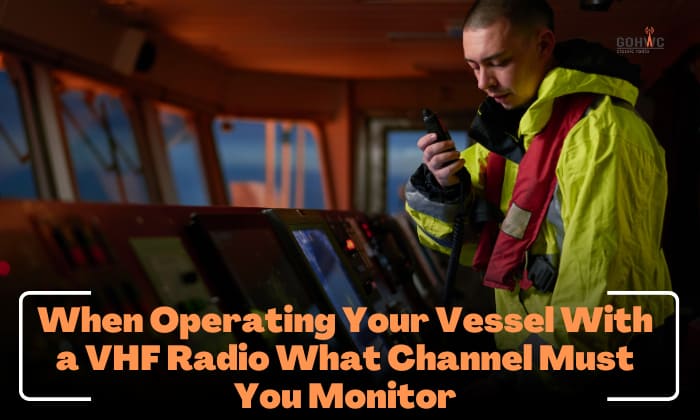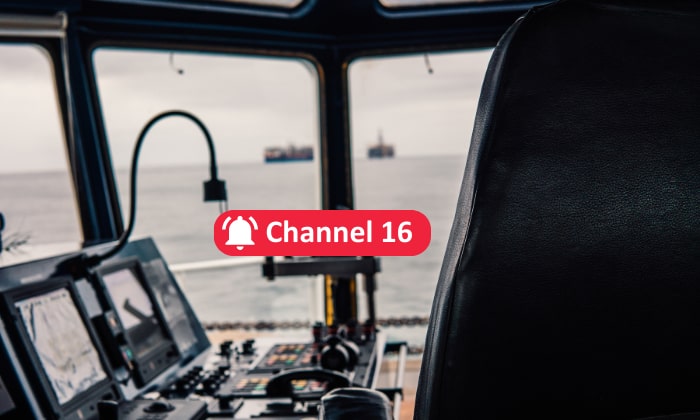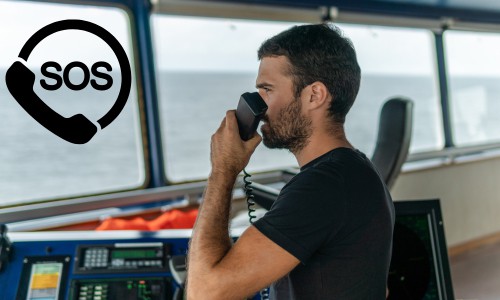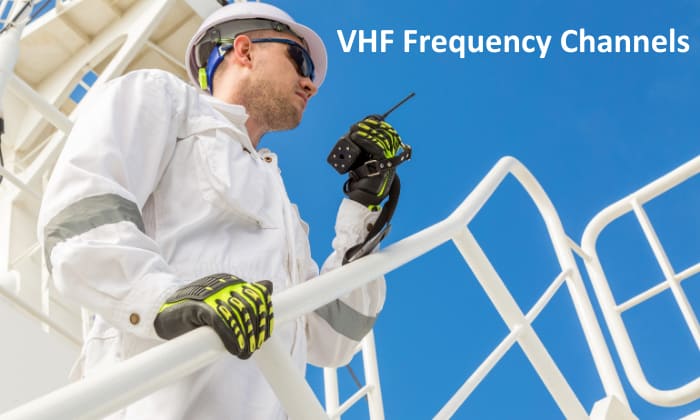When operating your vessel with a VHF radio, you should monitor channel 16. It is the international calling and distress channel designed for maritime use.
You can also monitor channel nine as a secondary channel. The FCC authorized Channel 9 to ease congestion on Channel 16.
However, keep in mind that, for safety purposes, monitoring channel 16 alone cannot be enough. There are other channels you should watch as well.
If you want to know these channels and more about when operating your vessel with a VHF radio what channel must you monitor?, let’s get started! This article will cover all you want to know about the VHF radio for boats.
Contents
How to Use VHF Marine Radio
There are various uses of the VHF marine radio. However, some key ways include: making an emergency or non-emergency call. Before doing so, here are the basics you should know:
- It’s essential to keep an eye on channel 16, even if you’re not actively using it. While it’s not required for recreational boaters, it’s wise to remember this as a radio user.
- The distance from which you can send and receive messages is determined by the radio’s power and the antenna’s height.
- It is illegal to make a fake emergency call or distress signal and fail to cancel it appropriately.
- If you’re not on call, switch to a working channel. Do not create congestion, specifically on channels 16 or 9.
- VHF radio has no privacy; everyone can hear you when you are on call. Be polite and keep your conversations short.
- Use the one-watt setting if your signal is too weak, or you have a life-threatening emergency.
1. Steps to make an emergency call on a VHF radio
- Note: only use the VHF emergency channel when there is a serious danger that could potentially harm those on board. Examples of such situations include when the boat is sinking, or there is a risk of significant injury or death.
- Step 1. Tune in your “VHF radio to channel 16”.
- Step 2. Shout the distress signal “MAYDAY” three times.
- Step 3. Say “THIS IS” once.
- Step 4. Give the “Name of the vessel” (Speak it thrice).
- Step 5. Say the “Boat registration number” and the “Call sign” once.
- Step 6. Repeat the name of the vessel and “MAYDAY” once.
- Step 7. State the “Position of the vessel” in terms of “Longitude and Latitude”.
You can give a known landmark or vessel movement to make it easy.
- Step 8. Describe the “Type of distress”. E.g, fire, sinking, death, etc.
- Step 9. State the “Number of persons” on the vessels.
- Step 10. Explain how you may want to be helped.
- Step 11. Add any other helpful information that might help.
- Step 12. Finish with the word “OVER.”
- Tip: Stay on the radio to assist in transmitting signals and facilitating help.
2. Steps you can follow to make non-emergency calls:
Non-emergency calls may involve contacting restaurants, other boats, or simply inquiring about a suitable docking location for dinner.
- Step 1. Tune in to the radio.
- Step 2. Name the vessel.
- Step 3. State the station being called three times.
- Step 4. Say “THIS IS” once.
- Step 5. Repeat the “Name of your vessel” once.
- Step 6. Finish with the word “OVER.”
- Step 7. Wait for a response.
Other VHF Frequency Channels You Should Monitor
These channels include:
- Channel 19 – Channel 19 is primarily reserved for commercial vessels and is commonly used for port operations. If you’re interested in tracking ship movements, checking this channel may provide helpful information.
- Channel 22 – This is known as the Coast Guard’s working channel. Once you have made initial contact on channel 16, remember to switch to channel 22. This channel will provide safety broadcasts on various topics, such as navigation hazards and weather warnings.
- Channel 9 – Aside from channel 16, you can use channel 9 to connect to the boater quickly. It is its secondary channel. It is a non-commercial channel, and you can use it to talk about the needs of the ship.
- Channel 70 – For vessels equipped with DSC radios, channel 70 is a useful alternative to channel 16. This channel enables Digital Selective Calling, which allows for automatic alerts to be sent to the Coast Guard in a pre-formatted manner.
- Channel 13 – Channel 13 is an important navigation tool that allows for easy communication between vessels. Its main purpose is to facilitate quick and efficient exchanges between bridges regarding ship encounters and passages.
Besides, it provides real-time updates on the movements and locations of boats, making it a valuable resource.
Benefits of VHF Marine Radio Communications
These are the benefits of marine radio communications:
- These radios are designed to withstand adverse weather conditions, including water exposure and moisture.
- They are customized for maritime environments and highly effective for communication.
- In numerous nations, they are easily available for leisure activities and serve as a dependable mode of communication that can be crucial in saving lives.
- These radios work on a specialized marine band and offer better signal reception than other types of radios.
FAQs
What Can You Do if No One Responds to Your Distress Call?
If no one responds to your distress call, switch to the high-frequency radiotelephone channel monitored by the coast guard and continue to call for help. If you have enough time, scan for alternative channels or interrupt any ongoing radio communication with your Mayday signal.
- Note: Radio Telephones with high frequencies are exclusively available for public communication, safety, and business purposes.
Do You Need a License to Operate a VHF Marine Radio?
Yes, you need a license to operate a VHF marine radio. In line with the Radio Communication Act, marine radio operators must have a Restricted Maritime Operator certificate. However, this might also depend on the activity.
For instance, recreational boaters can use the VHF marine radio without a license. This is in line with the Telecommunications Act of 1996.
Conclusion
Now that you know when operating your vessel with a VHF radio what channel must you monitor?, you can safely enjoy the maritime environment.
VHF radio communication allows you to monitor various channels, including the important channels 16 and 9, to ensure safety in the waters.
However, these channels alone cannot keep you safe. You should monitor several other channels, like channels 13,22, and 70, each serving a different purpose. For instance, for navigation information, you should tune in to channel 13.
Keep in mind, however, while you need to monitor channel 16, you should only use it when there is an emergency and lives on board are at risk.

Hello! I am Hart, the content writer and editor here at G0HWC. I used to be in the same local radio club with Howe, and he convinced me to join him in spreading my love for the radio with others. With a background in radio studies, I spend every day crafting accurate, easy to read content on various topics related to owning and using radios. I hope that my content can help you confidently venture in your radio journey!





